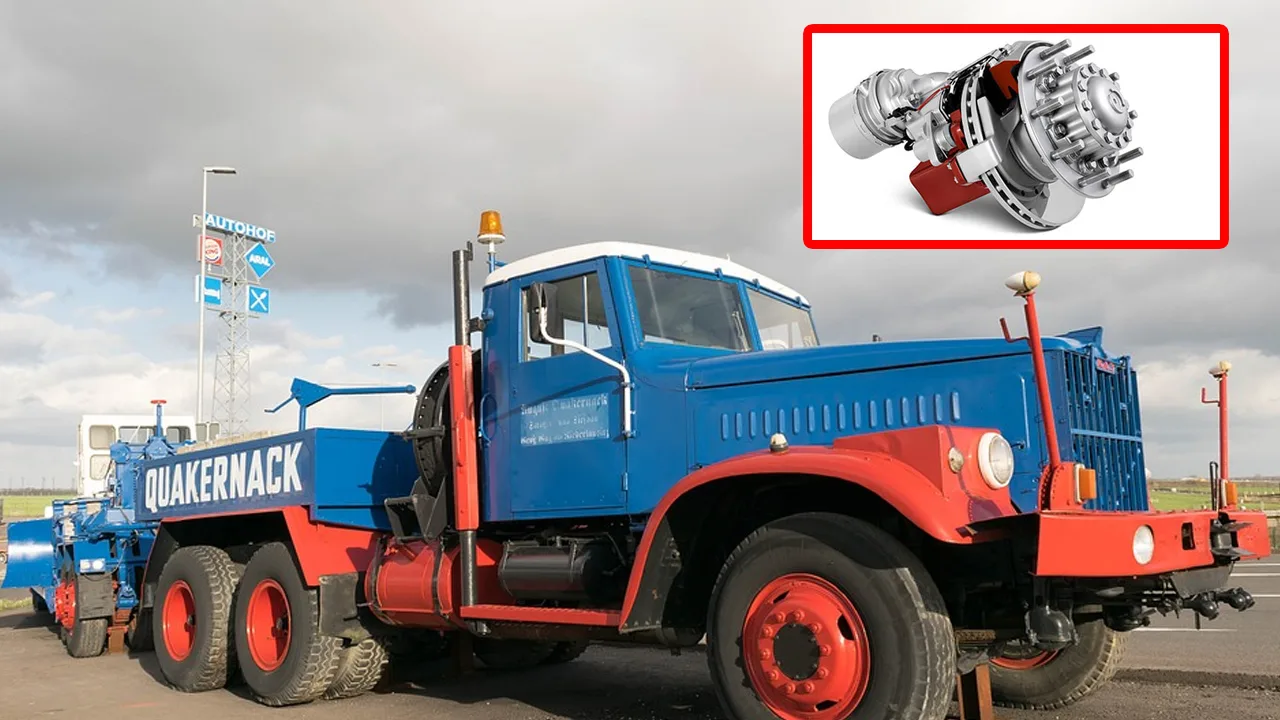Home »
In heavy-duty transportation, ensuring effective and reliable braking systems is paramount for safety and operational efficiency. Heavy trucks, commonly used for transporting goods over long distances, utilize air brakes as a robust and reliable braking solution. In this detailed exploration, we delve into why heavy trucks employ air brakes, examining the key components, working principles, and advantages that make them the preferred braking system for these massive vehicles.
Why do heavy trucks use air brakes
Air brakes are a type of braking system that uses compressed air to transmit force to the brake components, resulting in the deceleration or stopping of a vehicle. This braking mechanism is available in heavy-duty vehicles, including trucks, buses, and certain types of railway rolling stock. The use of air brakes in heavy trucks is advantageous due to their reliability, efficiency, and ability to handle the immense loads and demanding conditions associated with long-haul transportation.
Working Principles of Air Brakes
Pneumatic System Operation:
Air brakes operate on the principles of pneumatics, utilizing compressed air to transmit force. The system has storage tanks, valves, and brake chambers attached to the wheel brakes.
Air Storage Tanks:
Air storage tanks store the compressed air, ensuring a readily available and stable air supply for the braking system. These tanks act as reservoirs to store pressurized air, allowing for quick and efficient braking when needed.
Brake Chambers:
Brake chambers are the key elements that convert the compressed air’s energy into mechanical force to actuate the brakes. Applying air pressure causes a piston or diaphragm inside the brake chamber to move, applying force to the brake parts and activating the brakes.
Brake Components:
The brake components include brake shoes, drums, and other elements responsible for creating friction to slow down or stop the rotation of the wheels. When air pressure is released, the brake shoes move away from the drums, allowing the wheels to rotate freely.
- Audi GT50 Concept: A Loud Reminder of Why Car Enthusiasts Fell in Love With Audi
- Nearly 30% of UK Drivers Believe Car Tax Should Be Based on Mileage — Survey
- Why Planes and Boats Escaped the Luxury Tax But Cars Didn’t
- Australia’s Headlight Confusion: Authorities Warn Drivers After Viral $250 Headlight Rule Goes Wild Online
- 2025 Hyundai Venue Facelift Launched in India – Full Details, Variants, and Price
Control Valves:
Various control valves within the system manage the release and application of air pressure to the brake chambers. These valves include the foot brake, relay, and spring brake valve, each playing a crucial role in modulating braking force.
Advantages of Air Brakes in Heavy Trucks
Ability to Handle Heavy Loads:
One of the primary advantages of air brakes in heavy trucks is their ability to handle the immense loads associated with freight transportation. The compressed air system provides consistent and powerful braking force, making it well-suited for heavy-duty applications where substantial stopping power is essential.
Reliability and Consistency:
Air brakes are renowned for their reliability and consistency in performance. The compressed air as the medium ensures a consistent and instantaneous response, allowing for precise control over the braking force. This reliability is crucial for safety, especially during downhill descents or emergency braking situations.
Efficient Cooling:
Heavy trucks often face conditions that result in elevated braking temperatures, such as continuous downhill descents or stop-and-go traffic. Air brakes dissipate heat efficiently, preventing fade and maintaining optimal braking performance over extended periods.
Fail-Safe Design:
Air brake systems are inherently fail-safe. In the event of a loss of air pressure, such as a leak in the system, the brakes automatically engage rather than disengage. This fail-safe feature enhances safety by ensuring that the vehicle comes to a stop even if there is a malfunction in the braking system.
Reduced Wear and Tear:
Compared to hydraulic braking systems, air brakes experience less wear and tear. The absence of hydraulic fluids reduces the risk of brake fluid leaks, and the design of air brakes allows for smoother engagement and disengagement, contributing to a longer service life for the braking components.
Regulatory Compliance and Standardization
Industry Standards:
Air brakes are available in heavy trucks due to industry standards and regulations that mandate their use. Regulatory bodies, such as the National Highway Traffic Safety Administration (NHTSA) in the United States and similar organizations worldwide, have established standards that promote air brakes for heavy-duty commercial vehicles.
Standardization Across Manufacturers:
The standardized design and operation of air brakes ensure consistency across different manufacturers and models of heavy trucks. This standardization simplifies maintenance, repair, and replacement procedures, as technicians can apply consistent practices regardless of the specific truck make or model.
In Conclusion, Air brakes are preferred in big trucks because they are very dependable. They offer several benefits for large vehicles with multiple trailers. Unlike hydraulic brakes, air brakes have an endless supply of air, so they won’t run out of the fluid needed to operate. Even if there are small air leaks, they won’t cause brake failures, making them more reliable.
